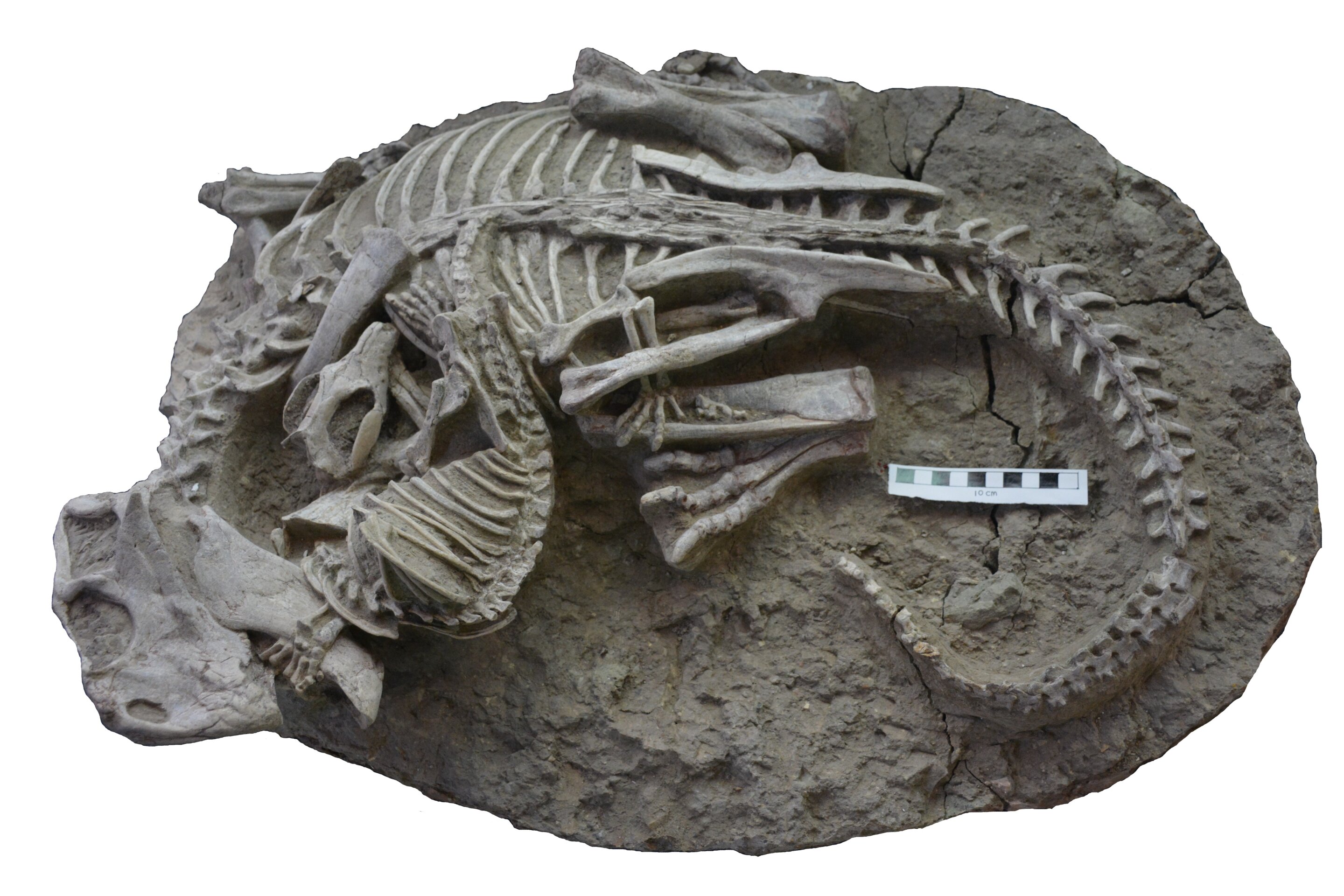Canadian and Chinese scientists have described an unusual fossil from around 125 million years ago that shows a dramatic moment in time when a carnivorous mammal attacked a larger plant-eating dinosaur.
“The two animals are locked in mortal combat, intimately intertwined, and it’s among the first evidence to show actual predatory behavior by a mammal on a dinosaur,” explains Dr. Jordan Mallon, paleobiologist with the Canadian Museum of Nature and co-author on the study published in the journal Scientific Reports.
The fossil’s presence challenges the view that dinosaurs had few threats from their mammal contemporaries during the Cretaceous, when dinosaurs were the dominant animals. The rare fossil is now in the collections of the Weihai Ziguang Shi Yan School Museum in China’s Shandong Province.
The dinosaur in the well-preserved fossil is identified as a species of Psittacosaurus, which is about the size of a large dog. Plant-eating psittacosaurs are among the earliest known horned dinosaurs and lived in Asia during the Early Cretaceous, from around 125 to 105 million years ago. The mammal in the fossil pair is a badger-like animal, called Repenomamus robustus. Although not large by dinosaur standards, it was among the largest mammals during the Cretaceous, at a time when mammals had not yet come to dominate the Earth.
Prior to this discovery, paleontologists knew that Repenomamus preyed on dinosaurs including Psittacosaurus because of fossilized baby bones of the herbivore found in the mammal’s stomach.
2023-07-19 08:24:02
Article from phys.org
